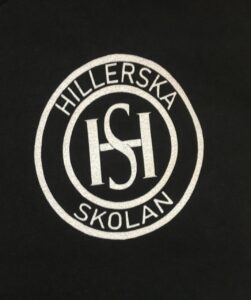Rupert Sheldrake’s theory of morphic resonance posits the existence (in some metaphysical or conceptual sense) of morphic forms which arise when living beings act in the world. In this theory, these forms are strengthened with each repetition of the action, and create a force field (a morphic field) which can be drawn upon by subsequent beings repeating the same act. The theory predicts that doing the same thing should become easier over time, even when the entities doing the acting are different, in different locations or not not even alive at the same time. Morphic resonance, if it exists (whatever that may mean) is a form of action at a distance and action through time. I have been fascinated by this theory since first reading Sheldrake’s book about it 36 years ago.
Archive for the ‘Creativity’ Category
Page 0 of 4
Vale: Peter Schickele (1935-2024)
The composer and musician Peter Schickele, manager of that lesser-known last son of JS Bach, PDQ Bach, has just died. He was heavily influenced by Spike Jones, whose music was a strong presence in my household growing up. With the death last year of Barry Humphries, it feels like the 1950s may now just have ended.
From his obituary in The New York Times, Mr Schickele is quoted as having said in an interview with the Times in 2015:
“Years ago I used to watch Victor Borge, still concertizing in his 80s. And it never occurred to me that I would do the same. I’m amazed that P.D.Q. has gone on for 50 years.
It just goes to show: Some people never learn.”
Friends Best
The streaming series Young Royals, produced by Netflix Sverige, is a coming-of-age story about teenagers with the unusual feature that the main actors are themselves only teenagers. (Most series aimed at teenagers seem to employ actors in their twenties.) Because of this focus, the reviews of the series I have seen are aimed at parents deciding whether or not they should allow their teenage children to watch it.

Gleichgewichtzustandwiederherstellungsmoeglichkeit
Gleichgewichtzustandwiederherstellungsmoeglichkeit (German, noun): The possibility of re-establishing a condition of equilibrium.
The need for enchantment
I just described our contemporary western culture as pseudo-rationalist materialism arising from a Protestant disdain for the supernatural, pagan aspects of Catholicism. I recalled a 2015 column by New York Times op-editor David Brooks on the need for enchantment in our lives. A willingness to accept enchantment is indeed a counter-cultural act.
The dating sites have taken the information available online and tried to use it to match up specific individuals. They’ve failed. An exhaustive review of the literature by Eli J. Finkel of Northwestern and others concluded, “No compelling evidence supports matching sites’ claims that mathematical algorithms work.” That’s because what creates a relationship can’t be expressed in data or photographs. Being in love can’t be done by a person in a self-oriented mind-set, asking: Does this choice serve me? Online dating is fascinating because it is more or less the opposite of its object: love.
When online daters actually meet, an entirely different mind-set has to kick in. If they’re going to be open to a real relationship, they have to stop asking where this person rates in comparison to others and start asking, can we lower the boundaries between self and self. They have to stop thinking in individual terms and start feeling in rapport terms.
Basically, they have to take the enchantment leap. This is when something dry and utilitarian erupts into something passionate, inescapable and devotional. Sometimes a student becomes enraptured by the beauty of math, and becomes a mathematician. Soldiers doing the drudgery of boot camp are gradually bonded into a passionate unit, for which they will risk their lives. Anybody who has started a mere job and found in it a vocation has taken the enchantment leap.
In love, of course, the shift starts with vulnerability, not calculation. The people involved move from selfishness to service, from prudent thinking to poetic thinking, from a state of selection to a state of need, from relying on conscious thinking to relying on their own brilliant emotions.
When you look at all the people looking for love and vocation today, you realize we live in a culture and an online world that encourages a very different mind-set; in a technical culture in which humanism, religion and the humanities, which are the great instructors of enchantment, are not automatically central to life.
I have to guess some cultures are more fertile for enchantment — that some activities, like novel-reading or music-making, cultivate a skill for it, and that building a capacity for enchantment is, these days, a countercultural act and a practical and fervent need.”
Reference:
David Brooks [2015]: The devotion leap. New York Times International Edition, 24-25 January 2015, page 9.
The image is “The Spirit of the Plains” (1897) by Sydney Long (1871-1955), now in the Queensland Art Gallery, Brisbane.
Back in the USSR
Possible Worlds
This is a list of movies which play with alternative possible realities, in various ways:
- It’s a Wonderful Life [Frank Capra, USA 1947]
- Przypadek (Blind Chance) [Krzysztof Kieslowski, Poland 1987]
- Lola Rennt (run lola run) [Tom Tykwer, Germany 1998]
- Sliding Doors [Peter Howitt, UK 1998]
- The Family Man [Brett Ratner, USA 2000]
- Me Myself I [Pip Karmel, Australia 2000]
On the topic of possible worlds, this post may be of interest.
Hackathon life
At the first Internet of Things and Distributed Ledgers Hackathon, Barclays Rise Hackspace, Notting Hill, London, 7 November 2015.
Why read?
Why do we read? Many people seem to assume that the only reason for reading is to obtain information about the world. With this view, reading fiction is perhaps hard to justify. But if one only reads to learn new facts, then one’s life is impoverished and Gradgrindian. Indeed, this reason strikes me as like learning to play the trumpet in order to have a means to practice circular breathing.
In fact, we read for many other reasons than just this one. One could say we primarily read novels for the pleasure that reading them provides:
- the pleasure of reading poetic text (as in the novels of Hardy, Joyce or Faulkner, for instance)
- the pleasure of reading elegant, finely-crafted prose (eg, Fanny Burney, Doris Lessing, Perec, Brautigan, the English translations of the books by Zhores and Roy Medvedev)
- the pleasure of engaging in deductive reasoning (any detective or espionage novel)
- the pleasure of imagining alternative societal futures (scifi), presents (political thrillers, espionage novels), or pasts (historical fiction)
- the pleasure of being scared (crime thrillers, horror stories)
- or the pleasure of parsing an intricate narrative structure (eg, Calvino, Fowles, Murnane, Pynchon).
These various pleasures are very distinct, and are orthogonal to the desire to gain information about the world. And some of these pleasures may also be gained from reading non-fiction, for example the finely-honed journalism of Lafcadio Hearn or AJ Liebling or Christopher Hitchens, or the writing of Oliver Sacks, who passed on today.
Mash-up culture
If one trope could define the full diversity of artistic endeavour in this Millenium period, it is the mash-up. For visual art, we have become used to collages of images, videos, fashion, and even material junk. Ditto for sound objects and events. In movies, Godfrey Reggio’s Koyaanisqatsi (1982) became a popular example, at least among college students. And now computer scientists are exploring mashups of programming languages, for instance, here. But not even architecture has escaped. The increasingly widespread Bauhaus-influenced style seen in new office and apartment buildings in Europe and North America these last two decades is one of life’s great pleasures of looking.
What distinguishes this architecture? The influence of Bauhaus and de Stijl ideas is evident in straight edges, flat roofs, vertical walls, and structures comprising rectangular prisms. But these are not the single-box prisms of the International Style skyscrapers of 50 years ago. Rather, each structure comprises multiple, intersecting prisms, expressing a multiplicity of interpenetrating shapes. The result is that external walls are not flat or simply lying in a single vertical plane, but extruding or withdrawing into multiple vertical planes. The effect of this interleaving mash-up is most pleasing.
Second, external surfaces are no longer a single, uniform colour or material. Typically, the different prisms, or the different interpenetrating vertical planes, will be made from different materials: red-brick, white stone or concrete, grey aluminium sheets, etc. Here, the mash-up of materials and colours is unlike most western domestic or office architecture of the past two centuries.
Here are some examples. First is the red-brick apartment building across the street in this photo, in Madison, Wisconsin (Source: via The Dish). Notice how the external walls do not all lie in the same vertical plane, and note the use of different coloured and perhaps even types of surfaces – red-brick, light-coloured brick, and grey slate. There is a white trim.
And here is the Jaclyn Building, in Sofia Bulgaria (Architects: Aedes Studio), again with red brick, grey and white surfaces, but this time less balanced vertically.
And here is an apartment building, The Reach, in Leeds Street, Liverpool, UK, with all the familiar elements along with a curved corner. The only thing lacking from this building is a single tree in green leaf right up against it, to give the image a textured asymmetry of colour and line.
